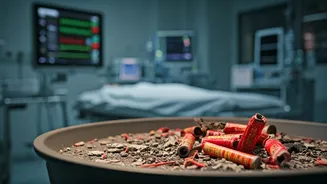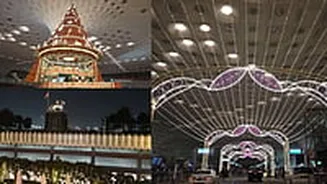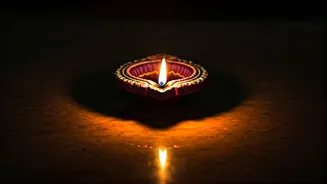The Festive Fallout
The joyous Diwali celebrations in Chandigarh were marred by a surge in injuries, as hospitals struggled to cope with the aftermath of firecracker-related
incidents. Data indicates that over 300 individuals sought medical assistance due to injuries sustained during the festive period. This stark number underscores the risks associated with the widespread use of firecrackers and its direct impact on public health. The severity of the injuries varied, ranging from minor burns and lacerations to more serious cases requiring extensive medical care. The incidents highlighted the need for increased safety measures and public awareness campaigns to mitigate the hazards associated with Diwali celebrations.
Hospital Overwhelmed
The influx of patients placed immense pressure on Chandigarh's hospitals, stretching their resources and staff. Medical teams worked tirelessly to treat the injured, managing burns, eye injuries, and respiratory issues, among other ailments. The high volume of patients not only strained hospital capacity but also diverted resources from other essential medical services. This situation emphasized the importance of adequate emergency preparedness and the need for hospitals to be equipped to handle potential surges in patient numbers during festive periods. Furthermore, it sparked discussions about the need for better regulation of firecracker use to reduce the incidence of such injuries.
Types of Injuries
The injuries reported in Chandigarh hospitals presented a diverse range of ailments related to firecrackers. Burn injuries, encompassing varying degrees of severity, were among the most frequent, requiring immediate and comprehensive treatment. Eye injuries, including corneal abrasions and in some instances, more severe damage, were also prevalent, necessitating specialized ophthalmic care. Respiratory issues, triggered by exposure to smoke and chemical fumes, added to the healthcare burden. Additional injuries included lacerations and trauma related to the explosion and debris of the crackers, illustrating the widespread danger posed by these items. This data underlines the multifaceted impact of firecrackers during celebrations, necessitating preventative measures to reduce harm.
Safety Concerns Arise
The overwhelming number of injuries underscored the necessity of heightened safety awareness among the public. The incidents prompted serious discussions regarding firecracker safety protocols. Many people were injured due to the improper handling of firecrackers or by being in close proximity to explosions. The need for strict guidelines and enforcement of safety standards became apparent. There was a significant need for public awareness campaigns to educate people about safe practices when using firecrackers, like wearing protective gear, staying at a safe distance, and handling them carefully. These campaigns would aim to prevent future incidents and contribute to safer celebrations.
Long-Term Consequences
The injuries sustained during the Diwali celebrations could have long-term consequences for the victims. Burn injuries may result in permanent scarring and physical disabilities. Eye injuries might cause visual impairments, potentially affecting one's vision. Furthermore, the psychological impact of the incidents should not be underestimated. Trauma from accidents could lead to anxiety, fear, and other mental health challenges. Addressing these long-term health concerns requires not only immediate medical interventions but also comprehensive rehabilitation programs and psychological support. The aftermath of the Diwali celebrations emphasizes the need for a holistic approach to address physical, emotional, and psychological injuries to aid recovery.
Future Preventative Measures
To prevent similar incidents from occurring in the future, various preventative measures are necessary. Stricter regulations on the production and sale of firecrackers are crucial. This includes enforcing quality standards and restricting the sale of dangerous products. Improved public awareness campaigns can educate the population on safe practices for using firecrackers. It is vital to emphasize safety measures such as designated firework areas, the importance of supervision, and the use of protective equipment. Furthermore, enhanced emergency response protocols and better training for medical staff are essential. The collaborative effort will help to facilitate safer festivities in the future.





